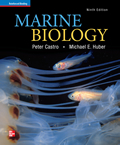1 A) Biodiversity, primary production B) Primary production, biodiversity C) Biomass, competition D) Freshwater flow, transparency 2 salt wedge is formed by a layer of seawater flowing on top of the outflowing freshwater.A) True B) False 3 A) True B) False 4 A) Along the Gulf of Mexico. B) Where river valleys were drowned. C) In cold places that have been glaciated. D) In areas with earthquakes. 5 A) Migratory routes B) Breeding grounds C) Nutrient dumps D) Safe, sterile open areas free of any predators. 6 A) Very low tidal range which produces little vertical mixing. B) The fresh water is colder than the seawater. C) The fresh water does not flow downstream. D) The seawater has the same density as fresh water. 7 A) It is a negative estuary due to almost no circulation. B) There is no sedimentation. C) There is no breeding of marine species due to tidal action. D) The saltwater wedge goes much further up the estuary. 8 A) True B) False 9 A) No detritus production at all. B) Less temperature variation C) Higher bacteria levels with more hydrogen-sulfide production. D) Fewer migrating species 10 A) A rocky intertidal area. B) A mudflat C) A mangrove forest D) The uppermost tidal area of a salt marsh. 11 A) True B) False 12 A) Seagrasses. B) Salt grass. C) Benthic diatoms. D) Large brown algae. 13 A) Osmoregulators B) Osmoconformers C) Anadromous D) Catadromous 14 A) Diatoms. B) Green algae. C) Detritus. D) Particles suspended in the water. 15 A) Catch the small amount of organic matter in the area. B) Clean mud off its filtering mechanism and gills. C) Shade its eyes from bright light. D) Deal with hypersaline water. 16 A) True B) False 17 A) Salmon B) Anchovy C) Killifish D) Leopard shark 18 A) Feet B) Wing structure C) Ability to osmoregulate D) Beak 19 A) Biological clocks B) Effects of predation on mussels C) Color changes D) Behavior 20 A) Anoxic water B) Always has a very high bacteria count C) Contains high levels of hydrogen-sulfide D) Has an intermediate salinity 21 Typha ) are plants of freshwater marshes, but they can be found at the extreme upper (landward) end of an estuary. Cat-tails are:A) Euryhaline. B) Stenohaline. C) Eurythermal. D) Osmoregulators. 22 A) True B) False 23 A) Modifying seismic activity in tsunami-prone areas B) Changing local weather patterns to alleviate hurricanes and typhoons C) Altering tidal patterns to avoid spring tides D) Acting as buffers or barriers to violent ocean surges of water resulting from natural disasters. 24 A) True B) False 25 A) Pickleweed. B) Enteromorpha .C) Mangroves. D) Eelgrass. 26 A) Sponges B) Crabs C) Ribbed mussel D) Mudskipper 27 A) True B) False 28 A) A nursery area has been destroyed. B) Food sources for small fish and their prey have been destroyed. C) Local water circulation has changed. D) The people who inhabit the condominium have already caught all of them.





